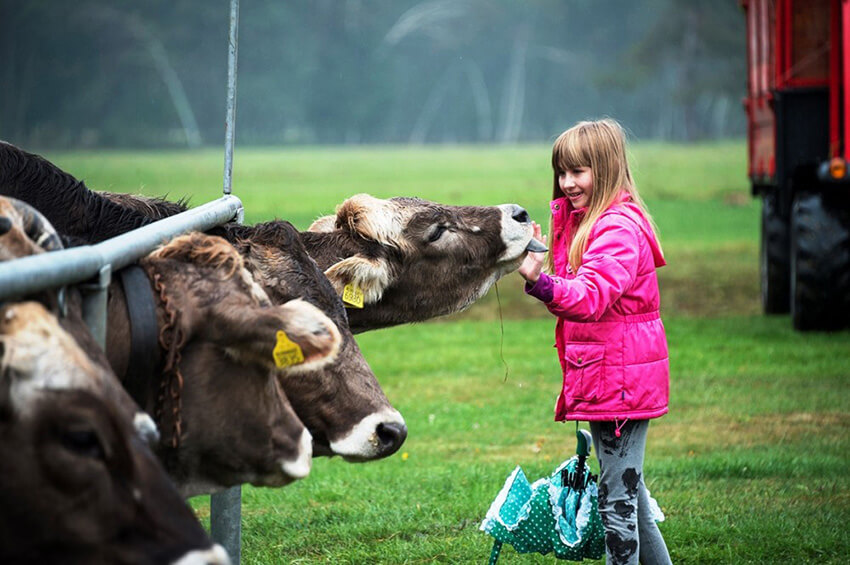Lago Maggiore, the large lake on the southern edge of the Alps with its mountainous, forest-rich backcountry, now beckons with romantic tranquility, glorious fall colors and all kinds of culinary highlights.
Celebrating fall

Delicate wisps of mist hang over the lake, mysteriously shrouding promenades and islands. Forests glow red-golden. Chestnuts, mushrooms and pumpkins find their way into the kitchens. This is when fall is celebrated on Lago Maggiore!
After the summer hustle and bustle, peace and quiet returns. Everyday life shifts down a gear. The gardens, vineyards and forests are ready for harvesting. Apples, pomegranates, grapes, pumpkins, mushrooms – here, on the southern edge of the Alps, nature is generous and provides plentiful goodies. Some are eaten directly; others are first refined in cellars and kitchens.
A major culinary highlight in the region are chestnuts. Evenings with family and friends gathering around the fireplace to roast chestnuts and enjoy them with a glass of wine are among the traditions that people still enjoy today. In restaurants and agritourism, chefs treat their guests to chestnut gnocchi, chestnut stew and other creations that make use of the nutritious fruit from the prickly shell.
Time for gourmet feasts

Fall in the Lake Maggiore region is also the time of the “Sagre”. Especially in the mountainous countryside, the culinary folk festivals are celebrated. Seasonal products such as pumpkins, chestnuts, potatoes or mushrooms take center stage. The delicacies can be enjoyed at long tables in open air. The Corona pandemic has not made planning easy. But, plan for next year to enjoy these “gourmet feasts”.
Formazza, in the area of the Ossola valleys in the northwestern backcountry of Lake Maggiore, celebrates the Walser Häpfla Festival at the beginning of October. Everything revolves around the excellent potatoes of this mountainous region. Visitors can taste the “Häpfla” in the most diverse variations. Gnocchi are just as important as Prata Häpfla (Rösti) and sweet dishes made from potato flour. The festival is dedicated to the Walsers as they were the ones who settled here centuries ago. Ancient Walser houses can be admired in this area even today.
Highlight at high altitude

Alpine cattle of various breeds will be meeting in the neighboring Vigezzo Valley at the beginning of October. At the same time, a large farmers’ market will be held in the valley, which stretches from the Italian-Swiss border down to Domodossola in Piedmont. Everything revolves around pumpkins on the third weekend in October. Then the municipality of Santa Maria Maggiore invites to its pumpkin festival Fuori di Zucca. Culinary delights go hand in hand with culture. Regional artists present their works in small exhibitions.
Valley residents and guests also celebrate the fall musically. If the weather is fine, Fabrizio Bosso and Alberto Gurrisi will play the trumpet and Hammond organ on the Piana di Vigezzo – a plateau 5,500 feet above sea level with a magnificent panorama. In case of rain, the concert, which everyone can attend for free (this year only with prior registration), will take place in the church of Santa Maria Maggiore.
Fall magic on the panorama train

The colorful forests of the region can be experienced as comfortably as spectacularly on board the “treno del foliage“. The panoramic train runs on the Vigezzina-Centovalli railroad line between Domodossola in Italy and Locarno in Switzerland. One of the stops where passengers can break the journey is Santa Maria Maggiore – there is no more atmospheric journey to the Pumpkin Festival or the Autumn Concert.
Autumn cuisine naturally includes good wine. The province of Novara, which stretches along the southern end of the lake, is one of Italy’s best-known wine-growing regions. The hills of Novara produce numerous DOC wines, including the spicy, ruby-red Spanna made from Nebbiolo, Vespolina and Uva Rara grapes. The wines owe their character to the special climatic conditions. The air currents between the Alps and the Lago provide natural ventilation, while the frequently flooded rice fields of the province of Novara ensure high humidity. The center of the wine region is the medieval town of Ghemme. The place name refers to a Celtic tribe that practiced viticulture here centuries before the Christian era.
Further information: www.visit-lakemaggiore.com



